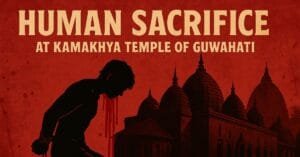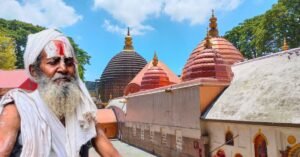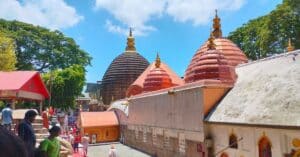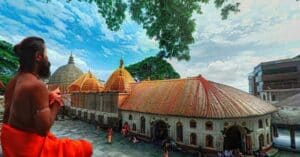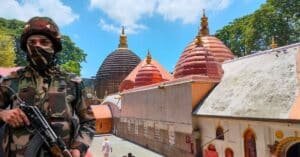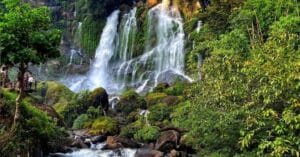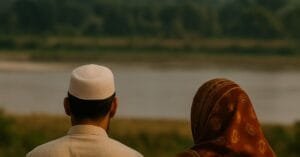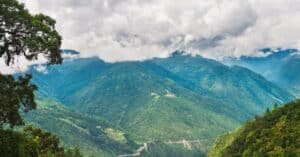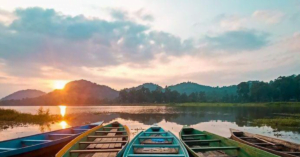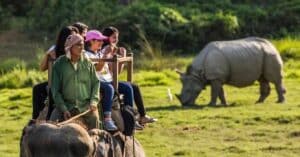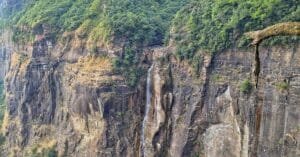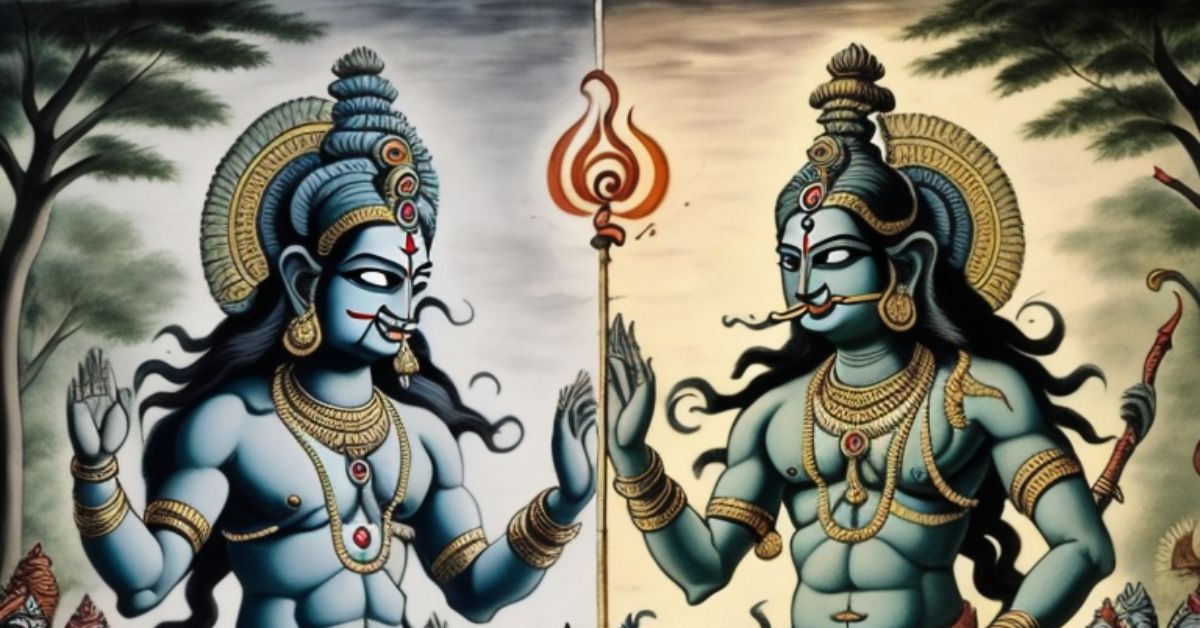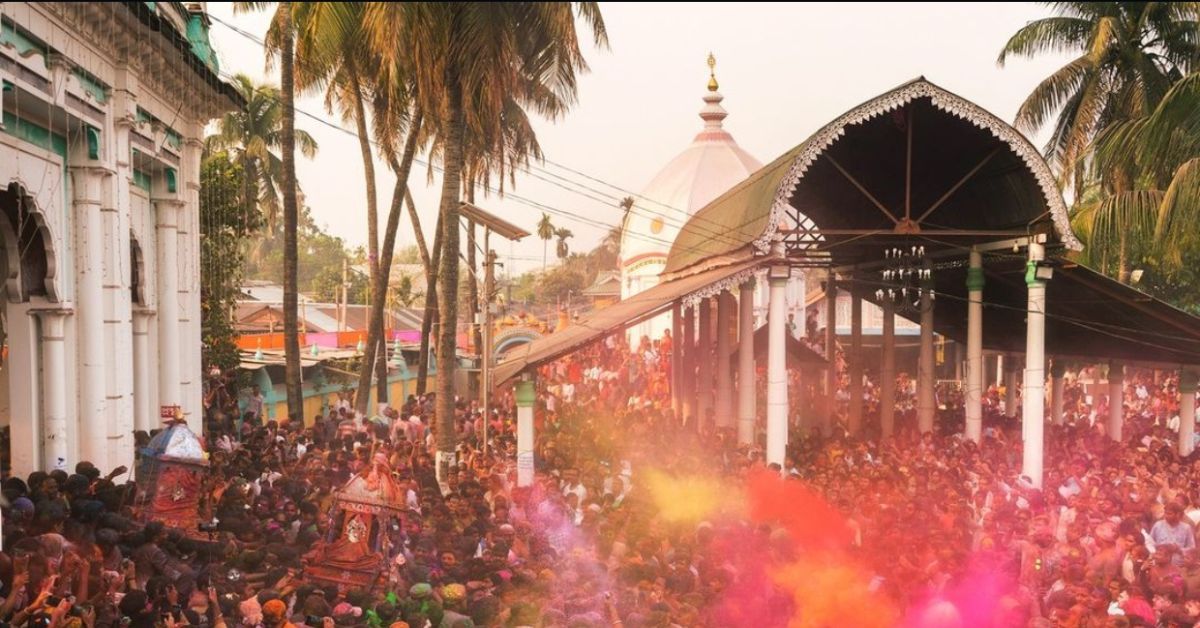The Kamakhya Temple of Guwahati, located on the southern bank of the Brahmaputra River above the Nilachal Hills, is a historic Shakti pith (shrine of divine power). Every year the Kamakhya temple of Guwahati receives millions of footfalls of devotees across India and the world. It is said that Maa Kamakhya -the goddess fulfils the wishes of devotees if one truly worships her. In this blog, we will have an insight into the origin and history of Kamakhya Temple, from mythology to real history.
It is to be noted that there are many stories associated with the history of Kamakhya temple and its construction. It is chronologically impossible to combine all stories into a single narrative. This blog includes all the stories and facts about Kamakhya Temple history, but not as a single story, but in bits and pieces.
The Story of Kamakhya Devi in Indian Mythology
According to legend, Goddess Durga was born as Sati in the house of King Daksha (son of Brahma) and was married to Lord Shiva. King Daksha always thought of Lord Shiva to be good for nothing and a homeless addict.
Once, saints and sages conducted a yajna. When King Daksha arrived, everyone stood up in his honour, except Shiva. This enraged Daksha, and to avenge this, he performed a yajna later by himself, to which everyone except Shiva and his daughter Sati was invited.
When Sati came to know about this yajna, she insisted that Shiva attend it. Shiva refused, and Sati went to the yajna alone, where she asked Daksha the reason for not inviting Shiva. Daksha then used such derogatory words against Shiva that Sati could not bear it any longer. Humiliated, she jumped into the fire and perished.
Original History of Maa Kamakhya Temple
When Shiva came to know of Sati’s tragic end, in extreme sorrow and anger he opened his third eye and started performing the Tandava dance, carrying Sati’s body. Lord Shiva full of grief carried the dead Sati on his shoulder and roamed the whole universe without having any purpose or destination. In order to bring back normalcy into the universe, Lord Vishnu with the help of his Spinning Wheel (sudarshan chakra) made fiftyone parts of her body. The places where the body parts of Sati fell were all were turned into holy, religious, places for worshiping her. It is believed that out of the fifty one body parts, one of it namely the female sexual organ fell above the Nilachal hill of Kamrup.
The story of Kamadeva
While Lord Shiva was in deep meditation after Sati’s death, the demon Tarakasura, who had by then acquired immense power via a boon that made him invincible except by the son of Lord Shiva, conquered the heavens. To kill Tarakasura, the gods required Skanda, the son of Shiva and Parvati. But this was not possible, as Shiva was still in meditation. Kamadeva, the god of love, was tasked with breaking Shiva’s dhyana and drawing his attention towards Parvati. Kamadeva succeeded in breaking Shiva’s meditation but paid the price, as Shiva, seething in anger, turned him into ashes with the powerful rays of his third eye.
Story of Kamakhya Temple : Who Built it at First?
At this juncture, Rati, the wife of Kaamdev whom Lord Shiva burnt to death, prayed and pleaded before them so that Lord Shiva could bring back Kaamdev her husband back to life. Lord Shiva agreed and brought Kamdev to life.
But Kamdev was no more that handsome which he earlier used to be. When he complained to Lord Shiva about it the Lord said-
“Kaamdev! The sexual organ of Devi Sati is secretely lying in the hills of Nilacahal. Go there, establish a temple in the anem of mahamaya/maa Kamakhya and start to publish and profess her name and significance among all people and only then will you get back the beauty you lost”
Kaamdev subsequently established the temple in the name of Mahamaya Kamakhya and professed her significance far and wide along with his wife Rati. This pleased Maa Kamakhya and she returned Kaamdev his lost beauty.
Disclaimer: This story of Kamakhya Temple of Guwahati based on mythology and folklore of Assam. There is no historical evidence to it.
Later History and Myth About Kamakhya Temple
Just like Maa Kamakhya is associated with Lord Shiva, numerous folklore links the story of Kamakhya Temple with Mythological king – Naraka or Narakasur. According to the legend, King Naraka used to worship Devi Kamakhya, but under the influence of King of Sonitpur Bana, Narakasur quit worshipping the Goddess. He engaged himself in heinous activities like harassing the Gods and saints as well as kidnapping and torturing any women he would lay his eyes upon.
King Narak was so mesmerized by the beauty of Goddess Maa Kamakhya that he proposed her to marry him. Goddess Kamakhya put a condition that only if he build the temple and the pathway to the hilltop in one night, would she consider the proposal. King Narak was surprisingly about to complete the whole project but then just prior to dawn Devi Kamakhya took the form of a rooster and started crowing thereby reminding the king that the night was over and his work incomplete. He failed and could not marry the Goddess Kamakhya. However, the work done by the King Naraka in order to marry Kamakhya is considered to be the foundation of the temple. Just standing near the Nilachal hill is the Narakasura hill constantly reminding us his association with the Goddess.
After the incident, Narakasura prohibited the all religious and tantric practices in the temple of Kamakhya as he was deceived by the goddess Kamakhya in his attempt to marry her. These practitioners of tantricism then shifted to Mayong village and the village flourished as a center of black magic in Assam.
Disclaimer: Again, this story of Kamakhya Temple of Guwahati based on mythology and folklore of Assam. There is no historical evidence to it.
But Who Built the Kamakhya Temple?
The initial construction of the Kamakhya temple is shrouded in mystery and legends. No One knows from which period the temple existed and who built it. If we have to believe the legends and myth, the construction of the Kamakhya temple goes to Kaamdev, then to King Naraka.
However, these stories of kamakhya temple are based on Kalika Purana and other religious texts who cannot be classified as authentic history.
Archaeological Evidence
The origin of the Kamakhya temple is obscure. According to archaeological evidence, the location of the temple was used for offering sacrifices and was worshipped by certain matrilineal indigenous tribes like the Garos and Khasis. The name Kamakhya comes from the Khasi religion’s primary deity, ‘Ka-mei-kha’, which means ‘She who created you.’ According to the Kalika Purana and Yogini Tantra as well, Goddess Kamakhya is of tribal origin, and the temple evolved over time through the assimilation of local tribal beliefs with Aryan tradition.
What about historical evidences and written records?
The Kamakhya temple’s roots can be traced back to the 7th century, and King Bhagadatta or Shashanka is credited with its initial establishment. The kings of the Mleccha dynasty were fervent followers of the Tantric cult and constructed a stone temple during the 8th-9th centuries.
First recorded written history regarding constriction of Kamakhya temple is during the Koch dynasty of Assam. As it was said earlier, the temple temple existed since ages without any evidence of written records of who built it and when. It was in between 1515 to 1580 AD that the Kamakhya temple was rebuilt by Koch King. It was again destroyed during Hussein Shah’s invasion of the Kamata kingdom and then it was King Naranarayan (son of King Biswasingha) who rebuilt it once again in 1565 and it is been standing ever since.
The current form of the temple was established under the reign of the Ahom kings.
FAQ and Mythbusters : The Story of Kamakhya Temple
Q: What is so special about Kamakhya Temple of Guwahati?
A: The Kamakhya temple represents many things in one. It represents the earliest form of Hinduism prevalent in Northeast India even before the arrival of Aryans. It is famous for tantricism, aghori cult, yoni worship, animal sacrifices etc. Above all, it is considered the supreme deity in Assam and Northeast India.
Q: Who built the famous Kamakhya Temple of Guwahati?
A: The correct answer is no one exactly knows who built it and when. It has been there since pre-historic times. However, the initial structure was built by King Naranarayan of Koch dynasty in the year 1565 AD. The current form of the temple was established under the reign of the Ahom kings
Q: Is it true that Men are not allowed inside Kamakhya temple?
A: No it is not. Generally, all person without discrimination is allowed inside the temple. However, it is to kept in mind that the temple exists because the female sexual organ (yoni) of Goddess Sati fell on the place of the shrine. It is during the ambubasi mela, a three-day long ban is imposed on visiting the shrine as people believe the Goddess menstruates. During these three day, only female priests or sanyasis are allowed to serve the temple during those days.


